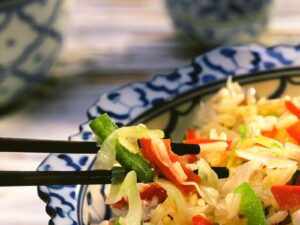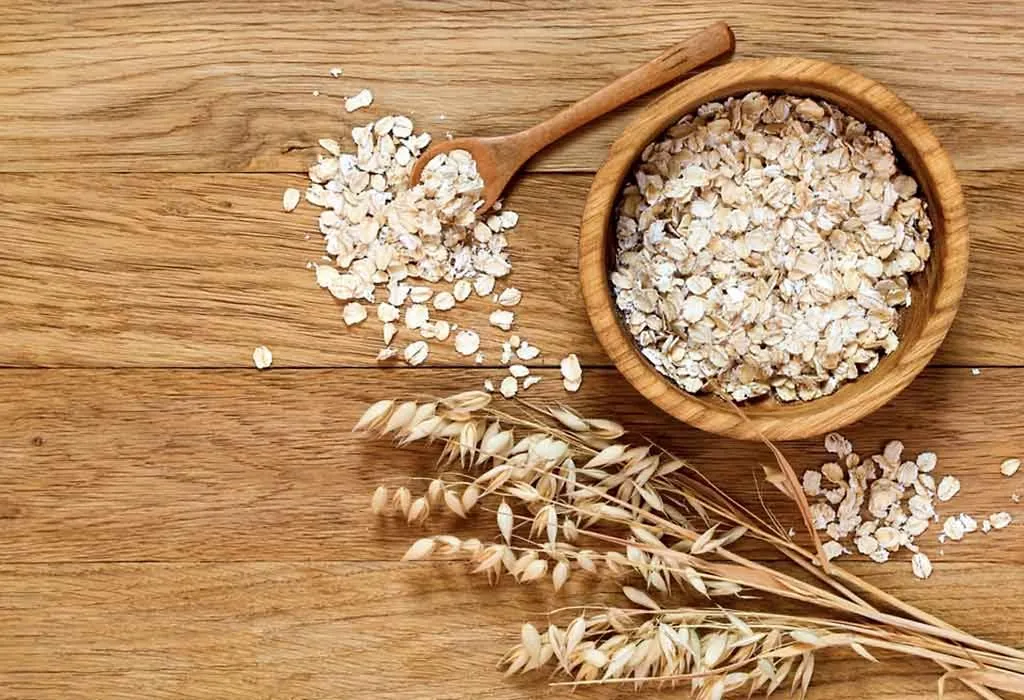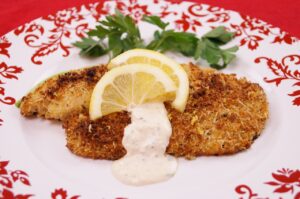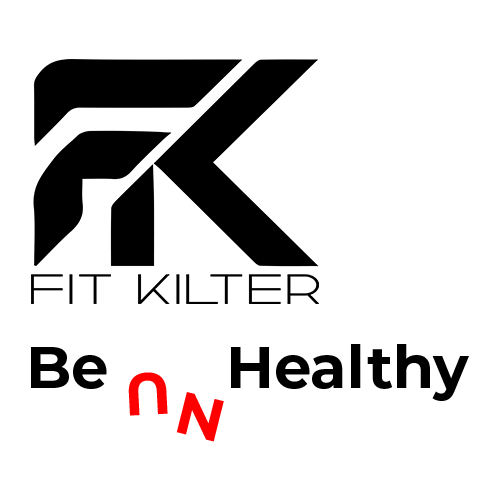Oats, scientifically known as Avena sativa, are a type of cereal grain that is widely cultivated for their edible seeds or grains. Oats are a staple food in many parts of the world and are known for their nutritional value and versatility in various culinary applications. Here are some key characteristics and information about oats:
Botanical Characteristics:
- Oats belong to the Poaceae family, which includes other cereal grains like wheat, barley, and rice.
- The oat plant typically grows to a height of 2 to 4 feet and produces a loose, branched flower cluster known as an inflorescence.
- Oats are cultivated for their seeds, which are commonly referred to as oat kernels or groats.
Are oats Gluten free ?
Oats are naturally gluten-free; however, they can sometimes come into contact with gluten-containing grains during processing, transportation, or storage. This cross-contamination can make oats unsuitable for individuals with celiac disease or gluten sensitivity.
To ensure gluten-free oats, look for products labeled as “certified gluten-free.” These oats are grown, processed, and tested in a way that minimizes the risk of gluten contamination, making them safe for those with gluten-related disorders.
It’s important to exercise caution when consuming oats if you have celiac disease or gluten sensitivity. Always check labels and choose certified gluten-free oats to avoid any potential adverse reactions.
What are the different types of oats available?
There are several different types of oats available, each with its own characteristics and culinary uses. The most common types of oats include:
- Whole Oat Groats: These are the whole, unbroken oat kernels with only the outer husk removed. Whole oat groats have a chewy texture and require a longer cooking time compared to other types of oats. They are less processed and retain all parts of the oat kernel.
- Steel-Cut Oats: Steel-cut oats, also known as Irish oats, are whole oat groats that have been chopped into small pieces using steel blades. They have a hearty, textured consistency and take longer to cook than rolled oats. Steel-cut oats are often used in oatmeal and porridge.
- Rolled Oats: Rolled oats, also known as old-fashioned oats, are whole oat groats that have been steamed and then flattened with large rollers. This process makes them cook relatively quickly and results in a smoother texture. Rolled oats are commonly used for making oatmeal, granola, cookies, and other baked goods.
- Quick Oats: Quick oats are rolled oats that are rolled thinner than old-fashioned oats and are precooked. This processing method allows them to cook even more quickly, making them a convenient choice for busy mornings. They are often used for making oatmeal and can be used in recipes that require a shorter cooking time.
- Instant Oats: Instant oats are the most processed form of oats. They are pre-cooked and often flavored with sweeteners and additives for rapid preparation. Instant oats are typically used in single-serving oatmeal packets that can be quickly made by adding hot water.
What are the Nutritional Value of 100gms of Oats?
The calorie and macronutrient content of 100 grams of dry oats (before cooking) is approximately as follows:
Calories: Approximately 389 calories
Protein: Approximately 16.9 grams
Fat: Approximately 6.9 grams
Carbohydrates: Approximately 66.3 grams
Fiber: Approximately 10.6 grams
What are the nutritional benefits of oats?
- High in Dietary Fiber: Oats are an excellent source of dietary fiber, with both soluble and insoluble fiber. The soluble fiber, particularly beta-glucans, helps lower cholesterol levels and stabilize blood sugar, making oats beneficial for heart health and diabetes management.
- Rich in Complex Carbohydrates: Oats provide a steady source of complex carbohydrates, which are slowly digested, leading to sustained energy levels and reduced hunger.
- Protein Content: Oats contain more protein than most other grains, making them a valuable source of plant-based protein. This is beneficial for muscle maintenance and overall health.
- Abundant in Vitamins and Minerals: Oats contain essential vitamins and minerals, including manganese, phosphorus, magnesium, iron, B-vitamins (such as thiamin and folate), and zinc. These nutrients play various roles in maintaining health, from supporting metabolism to promoting strong bones.
- Low in Saturated Fat: Oats are naturally low in saturated fat and free of trans fats, making them heart-healthy and suitable for those looking to manage their cholesterol levels.
- Antioxidant Properties: Oats contain antioxidants, such as avenanthramides, which have anti-inflammatory and anti-itching properties. These compounds contribute to overall health and well-being.
- Weight Management: Oats are filling and help control appetite due to their high fiber content. Including oats in your diet can aid in weight management by promoting a feeling of fullness.
- Digestive Health: The fiber in oats supports digestive health by promoting regular bowel movements and preventing constipation.
- Blood Sugar Regulation: Oats have a low glycemic index, which means they have a minimal impact on blood sugar levels. This is beneficial for individuals with diabetes or those looking to maintain stable energy throughout the day.
- Heart Health: The combination of soluble fiber and antioxidants in oats can help reduce the risk of heart disease by lowering LDL (bad) cholesterol levels and supporting overall cardiovascular health.
- Gluten-Free Option: Certified gluten-free oats are available for individuals with celiac disease or gluten sensitivity, providing a safe and nutritious alternative.
- Versatility in Cooking: Oats can be used in a wide range of recipes, from oatmeal and granola to baked goods and smoothies, making it easy to incorporate their nutritional benefits into your daily meals.
Can oats help with weight loss?
Certainly! Oats can be a helpful ally in weight loss efforts. Their high fiber content, especially beta-glucans, promotes feelings of fullness, curbing unnecessary snacking and overeating. Oats offer a steady source of energy, preventing energy crashes and cravings for high-calorie snacks. With a low glycemic index, they help regulate blood sugar levels, reducing sudden hunger pangs. Additionally, oats are nutrient-dense, providing essential vitamins and minerals without excess calories. Their versatility allows for creative, satisfying meals that support weight loss goals. Remember to choose whole or steel-cut oats, limit added sugars, and maintain a balanced diet and physical activity for effective weight management.
Can oats be eaten raw?
Yes, oats can be eaten raw, and they offer a nutritious and versatile option for those seeking a quick and convenient addition to their diet. Raw oats are commonly used in recipes like overnight oats, where they absorb moisture from liquids like milk or yogurt, resulting in a creamy, no-cook oatmeal. They can also be added to smoothies to provide a hearty texture and boost the fiber content. Additionally, raw oats are often used in homemade energy bars and baked goods, contributing a satisfying crunch and a dose of nutrition. While raw oats are safe to eat, keep in mind that their texture is chewy, and some people prefer the softened texture achieved through soaking or cooking, as in traditional oatmeal.
Are there any side effects of eating too many oats?
Eating oats in moderation is generally safe, but consuming very large quantities may lead to digestive discomfort for some people due to their fiber content.
Can oats be included in a gluten-free diet?
Yes, certified gluten-free oats are safe for individuals with celiac disease or gluten intolerance. However, cross-contamination should be avoided.
Do oats have to be cooked before eating?
While oats are often cooked, they can also be soaked overnight or used in recipes like granola and energy bars without cooking.
What is the shelf life of oats?
The shelf life of oats depends on the type of oats and how they are stored. Unopened packages of oats, whether they are whole oat groats, steel-cut oats, rolled oats, quick oats, or instant oats, can generally last for quite some time when stored in optimal conditions. In a cool, dry place, away from direct sunlight and heat, unopened packages of oats can maintain their quality for up to 1 to 2 years or more. However, once opened, the shelf life is reduced. Oats should be transferred to an airtight container to prevent moisture, pests, and odors from affecting their quality. After opening, oats should typically be consumed within 6 months to a year, with instant oats having the shortest shelf life once opened. Regularly checking for any signs of spoilage, such as an unusual odor or the presence of insects, is advisable to ensure the oats remain fresh and safe to eat.
What is the difference between rolled oats and steel-cut oats?
Rolled Oats (Old-Fashioned Oats):
- Processing: Rolled oats are made by taking whole oat groats and steaming them before flattening them with large rollers. This process partially cooks the oats and flattens them into flakes.
- Texture: Rolled oats have a flat, round shape and a smoother texture compared to steel-cut oats. They are often referred to as “old-fashioned” oats.
- Cooking Time: Rolled oats cook relatively quickly, typically in about 5-10 minutes when simmered on the stove or used in recipes like oatmeal.
- Flavor: They have a mild, nutty flavor and are a popular choice for oatmeal, granola, cookies, and other baked goods.
- Convenience: Rolled oats are convenient for making oatmeal in the morning, as they require less cooking time compared to steel-cut oats.
- Steel-Cut Oats (Irish Oats):
- Processing: Steel-cut oats are made by chopping whole oat groats into small pieces using steel blades. They are the least processed form of oats, with no flattening or steaming involved.
- Texture: Steel-cut oats have a coarser, chewier texture compared to rolled oats. They retain their original shape and appearance.
- Cooking Time: Steel-cut oats have a longer cooking time, typically taking around 15-30 minutes to cook on the stove. Their longer cooking time results in a hearty, textured oatmeal.
- Flavor: They have a more robust, nutty flavor and offer a different oatmeal experience than rolled oats.
- Versatility: Steel-cut oats are favored for their texture and are often used in savory oatmeal dishes and as a base for grain bowls.
Both rolled oats and steel-cut oats are nutritious and provide the health benefits associated with
Are instant oats as nutritious as other types of oats?
Instant oats are slightly less nutritious than other types of oats like old-fashioned rolled oats or steel-cut oats. The difference in nutrition stems from the processing method. Instant oats are pre-cooked, dried, and often further processed for quicker cooking, which can result in a reduction of some nutrients and a slightly different texture.
While instant oats still contain essential nutrients like fiber, vitamins, and minerals, they have a higher glycemic index compared to less-processed oats. This means they can cause a quicker spike in blood sugar levels. Additionally, the instant oat processing can lead to a smoother texture and a milder flavor, which some people prefer but may come at the cost of a slightly reduced fiber content.
However, it’s important to note that the nutritional differences between instant oats and other types of oats are generally minimal, and instant oats still offer health benefits and are a convenient choice for a quick breakfast. If you prioritize the texture and convenience of instant oats, they can be part of a balanced diet, but for those looking for maximum nutritional value, old-fashioned rolled oats or steel-cut oats may be preferred.













